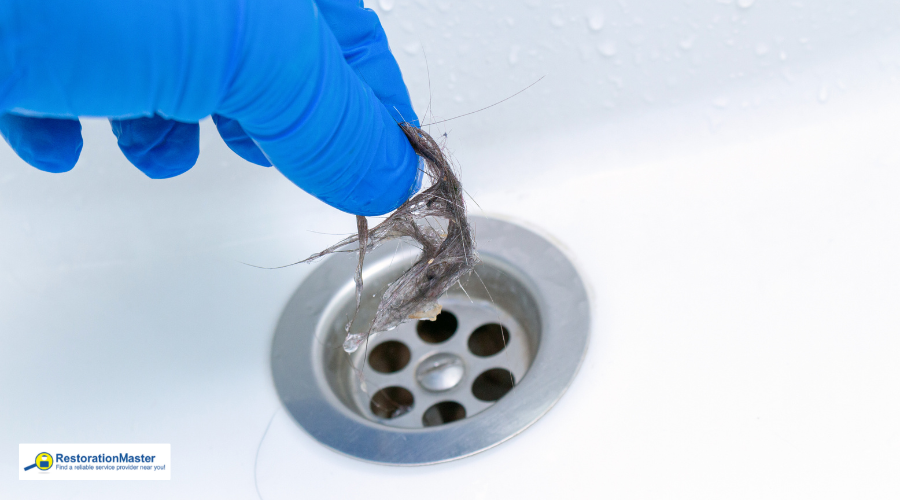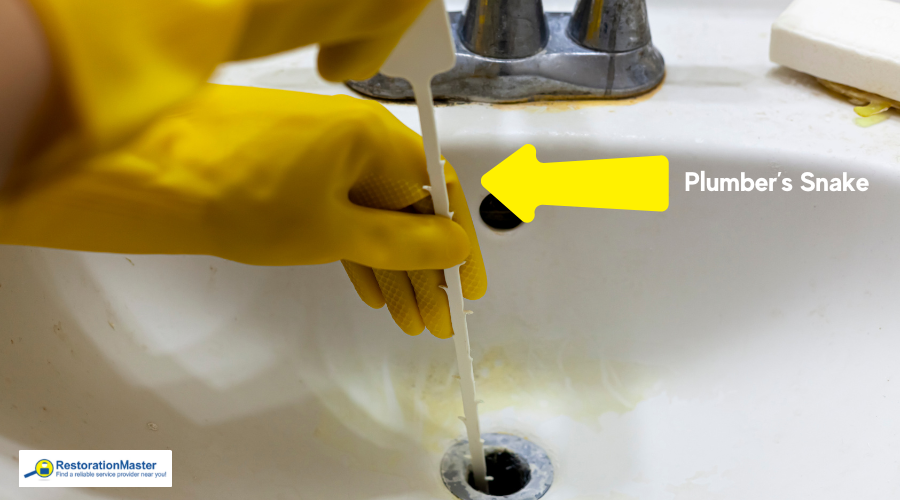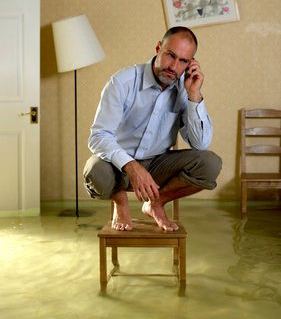How to Unclog a Bathroom Sink
Functional bathroom sinks are a relief, not to mention an all-around convenience when you can wash your hands or brush your teeth. The soapy suds and toothpaste vanish in a swirl down the sink. But homeowners can expect to deal with a slimy, smelly, and wet mess of gunk when the bathroom sink starts to pool water.
A clogged bathroom sink is an unpleasant event. The sink is virtually useless during the time it stays clogged. Quick action, however, can circumvent a disastrous water damage situation.
What Causes Sink Clogs?
Sinks in the bathroom clog for various reasons. Most commonly, a combination of soap scum and hair are the main culprits. The buildup of hair and scum occurs around the drain’s surface, leaving the clean water streaming from the faucet failing to fully empty into the drain. Additionally, foreign objects can fall into sinks, causing obstructions in the pipes. Hard water can lead to mineral buildup in pipes, narrowing the passage and increasing the risk of clogs. Regular maintenance can help prevent sink clogs, keep your sink in good condition, and prevent water damage.
How to Unclog a Bathroom Sink
Unclogging a bathroom sink can be a simple task that saves you time and money on professional services. Whether you are facing a slow drain or complete blockage, understanding the common causes of bathroom sink clogs is essential for effective solutions. With the right tools and patience, you can restore your sink to proper working order.

The Wire Hanger Method
Wire hangers are plentiful around the home. Pick one up, straighten the hanger, and bend over one end to fashion it into a hook. Your goal is to not push the grime further into the drain. You want to pull out what’s clogging the sink.
Dip the wire hanger hook into the sink. Fish around with the wire hanger and pull out the mess of hair and gunk. Once you’ve yanked out as much muck as possible, stream hot water into the drain. Your drain is now clear.
The Baking Soda and Vinegar Solution
Another set of household staples, vinegar, and baking soda, can be combined to form an effective solution that will open up a clogged drain.
- First, remove the drain stopper.
- If the drain stopper attaches to the thread inside, simply twist the stopper to remove it.
- Use a funnel to direct the baking soda and vinegar solution into the deepest parts of the drain if you are unable to remove the drain stopper.
- Measure a half cup of baking soda and toss the powder into the drain.
- A half cup of distilled white vinegar should then be poured down the sink over the baking soda. The solution will fizz.
- The effervescent effect will dissolve the mess, including hair and soap scum, that is clogging the bathroom sink.
- Any unpleasant odors can be lifted by dropping lemon juice into the sink after you rinse away the baking soda and vinegar.
Even when your bathroom sink is not clogged, you can drain the water even faster with frequent uses of the baking soda and vinegar method.
The Boiling Water Process
When your bathroom sink is clogged, relax, as boiling water will unclog your drain before you can make yourself a cup of tea. Pour several cups of boiling water gradually down the clogged sink in several stages, allowing gaps of a few seconds in between each pour to let the heated water work. Your bathroom sink drain should be unclogged at the end.
The Plumber’s Snake Technique
An auger is also known as a plumber’s snake. Consisting of a long piece of cable, the snake can be inserted into the drain to loosen or pull out the sediments clogging the drain. The plumber’s snake should be inserted into the drain, in between the drain’s thread or cross grid.
Use a push-and-pull motion to maneuver the snake inside the drain. Eventually, you will pull out the residues clogging the drain, and your sink will freely drain the water once again.

The Salt and Baking Soda System
The combination of salt and baking soda, and eventually scalding water, produces a strong chemical reaction that is useful to unclog a bathroom sink. All that is necessary can be found inside your kitchen pantry: salt and baking soda.
- Pour a half cup of salt into the clogged drain.
- Pour a half cup of baking soda immediately after.
- Let the granules sit for about a half hour.
- Pour boiling water into the drain, on top of the salt and baking soda mixture.
The final step acts as a powerful dissolver that will leave your bathroom sink draining smoothly.
Wet and Dry Vacuum Procedure
If you have a wet and dry vacuum at home, you can use it to unclog a bathroom sink. A wet and dry vacuum can also be rented from a local hardware store. The vacuum acts like a plunger, with more powerful suction abilities.
- First, set the vacuum to handle liquids and to its highest setting.
- Insert the hose into the drain and form a tight seal.
- The clog should start to break apart from the air pressure delivered by the vacuum.
- You can switch from the blow position to the suction position to replicate the actions of a plunger.
- Eventually, the wet and dry vacuum will suck in all the gunk into the canister, leaving behind a cleared drain.
Clean the bathroom sink’s drain stopper routinely to prevent a buildup of hair and soap scum. A hair trap will effectively thwart hair from getting caught inside the drain.
How Can I Prevent Clogs in My Bathroom Sink?
Preventing sink clogs in the bathroom is essential for maintaining efficient drainage and avoiding costly repairs. Using a mesh or silicone strainer over the sink drain is an effective method, by catching hair and soap particles. Occupants of the home should also dispose of non-flushable items in the trash, rather than the sink.
Regularly cleaning the sink and drains using a mixture of baking soda, vinegar, and hot water can help break down minor clogs and prevent them from worsening.
Professional Water Damage Cleanup
When water damage strikes, it is important to take immediate action to stop the spread of damage. Water damage can lead to mold growth, and consequently, a host of health issues for the home’s occupants as well as structural problems within the property. In the event water damage occurs in your home, whether it’s due to a clogged drain, faulty plumbing, broken appliance, or natural disaster, a professional water damage restoration company can help.
If you experience water damage due to a sink clog or any other issue, don’t wait for it to worsen. RestorationMaster’s professional water damage restoration services are here to help you recover and restore your home.












